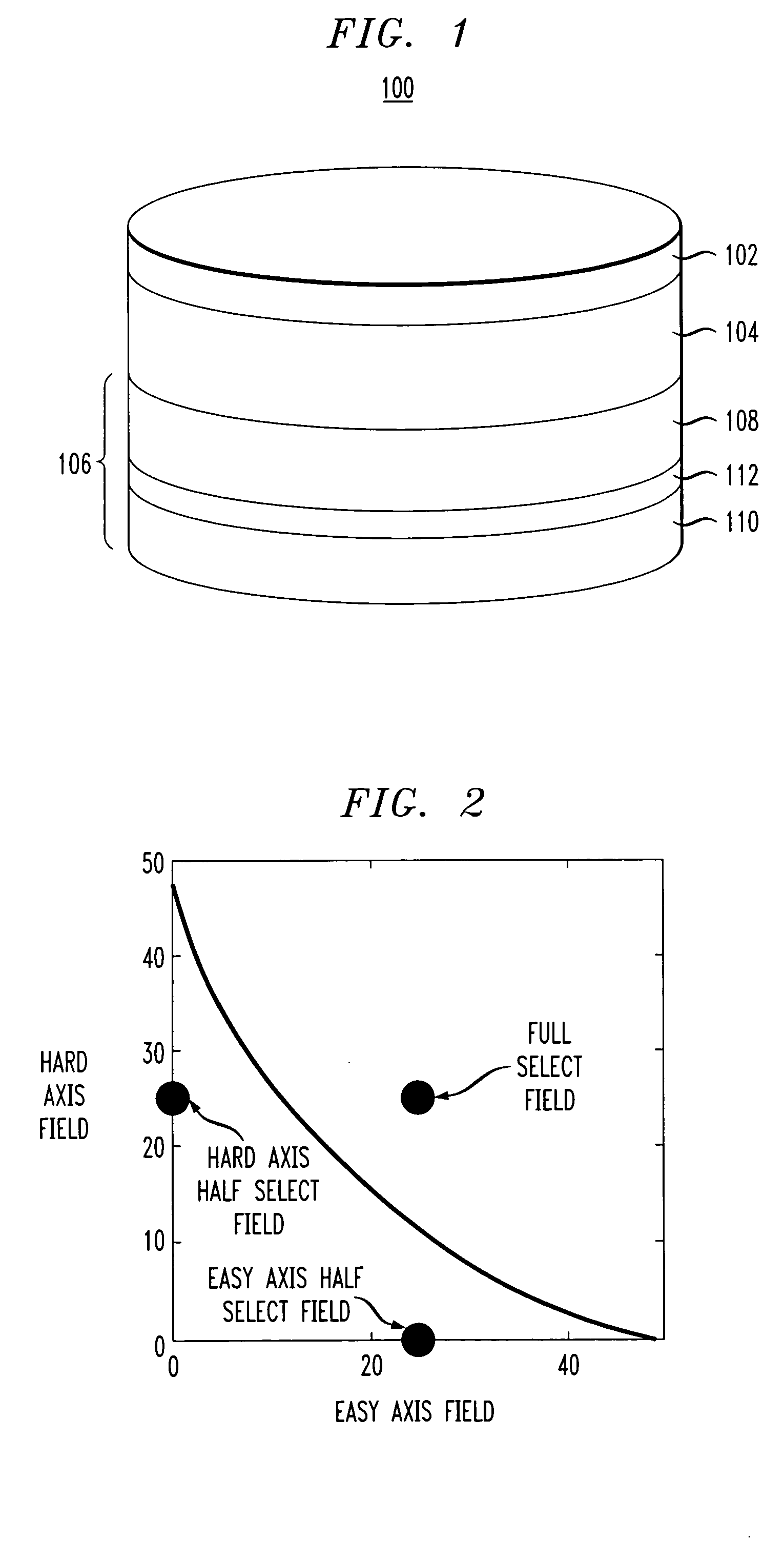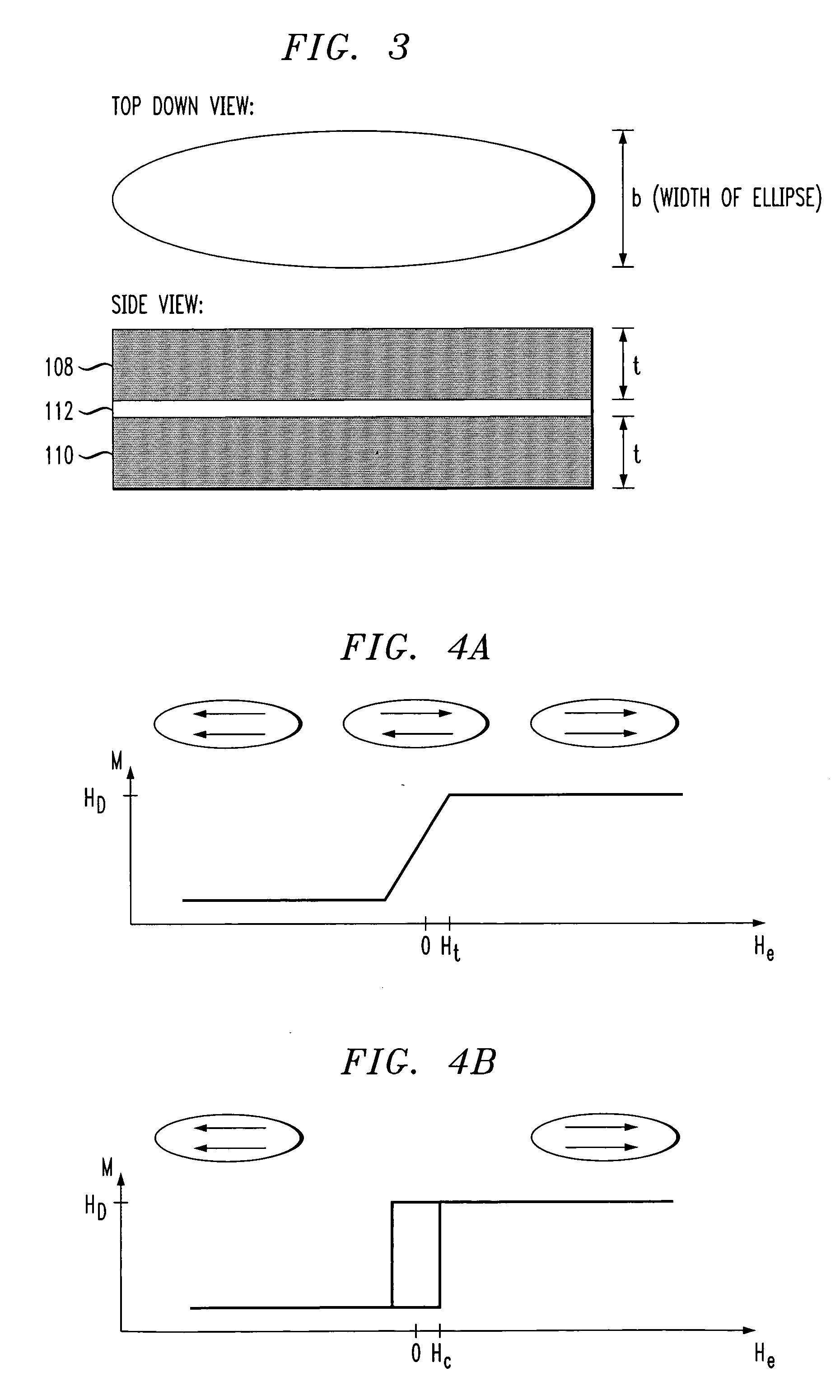Easy axis magnetic amplifier
- Summary
- Abstract
- Description
- Claims
- Application Information
AI Technical Summary
Benefits of technology
Problems solved by technology
Method used
Image
Examples
example 1
[0048]FIG. 8 shows an illustrative astroid calculated using the single domain theory for an exemplary composite semiconductor device structure. The composite semiconductor device structure comprised a free layer consisting of a single thin layer (1.5 nanometers (nm)) with a large amount of intrinsic anisotropy (80 Oersteds (Oe)). The amplifier is composed of two layers, each four nm thick, weakly coupled together by parallel exchange coupling. The astroid shows the expected L-shaped behavior.
example 2
[0049]FIG. 9 shows an illustrative astroid calculated using the single domain theory for another exemplary composite semiconductor device structure. This structure has a free layer comprising two magnetic layers (1.5 nm and 1.6 nm thick) strongly anti-parallel coupled together, each with two Oe of intrinsic anisotropy. This configuration effectively creates a free layer with a net thickness of only 0.1 nm and a large intrinsic anisotropy of 2*(1.6+1.5) / (1.6−1.5)=62 Oe. The amplifier employed has the same configuration as that in the structure of FIG. 8, above.
example 3
[0050]FIG. 10 shows an illustrative astroid calculated using the single domain theory for another exemplary composite semiconductor device structure. Here, the same amplifier as that described in conjunction with the description of FIG. 8, above, is employed. Here the free layer is a single layer, four nm thick, with an intrinsic anisotropy of 94 Oe. At large hard axis fields, the astroid is shown to close up again. This is due to canting of the amplifier structure by the dipole field of the free layer, an effect that was ignored in the discussion above. This closing up of the astroid provides even larger write margins by allowing even larger hard axis half select fields, without switching. In order to take advantage of this feature most effectively, the hard axis field should be removed first. This is shown in FIG. 10. The easy and hard axis fields can be applied in any order. It does not matter if the hard axis field is set to a value larger than the closed region, as shown by the...
PUM
 Login to View More
Login to View More Abstract
Description
Claims
Application Information
 Login to View More
Login to View More - R&D
- Intellectual Property
- Life Sciences
- Materials
- Tech Scout
- Unparalleled Data Quality
- Higher Quality Content
- 60% Fewer Hallucinations
Browse by: Latest US Patents, China's latest patents, Technical Efficacy Thesaurus, Application Domain, Technology Topic, Popular Technical Reports.
© 2025 PatSnap. All rights reserved.Legal|Privacy policy|Modern Slavery Act Transparency Statement|Sitemap|About US| Contact US: help@patsnap.com



